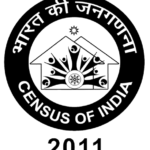 The recent approval by the Government of India for caste based census has aroused concerns among political parties as well as social scientists and ethnographers. For the self-proclaimed ‘modernists’ such regressive measures are likely to heighten caste consciousness among Indians. While the pragmatists argue that data on caste can help the government to better target affirmative action policies and thereby address caste differences rationally. The fact however is the that caste as a social reality in India draws succour from multiple sources which will remain untouched by either the proposed census or the resultant official policies. Caste issues influence everyday life of Indians in countless ways.
The recent approval by the Government of India for caste based census has aroused concerns among political parties as well as social scientists and ethnographers. For the self-proclaimed ‘modernists’ such regressive measures are likely to heighten caste consciousness among Indians. While the pragmatists argue that data on caste can help the government to better target affirmative action policies and thereby address caste differences rationally. The fact however is the that caste as a social reality in India draws succour from multiple sources which will remain untouched by either the proposed census or the resultant official policies. Caste issues influence everyday life of Indians in countless ways.
For those who think that caste in India is merely a tool of political opportunism or a remnant of ancient Hindu culture, visit to the rural regions of North Kerala during the winter months can be surprising and unnerving. Every year as the winter sets in, rural areas of North Kerala prepare for a unique transformation of social relations. Theyyam is an art form where performers, belonging to lower castes, are believed to be incarnated by local deities and members of higher castes flock to seek their blessing. For three months of the year individuals from the lower castes are elevated to the status of God but have to live as untouchables once the Theyyam season culminates.
Numerous rituals and customs like Theyyam continue to nourish the practice of caste differences in India. One only needs to skim through the matrimonial columns in leading English dailies to get a sense that caste is an important consideration even for the ‘modern’ elite segment of the urban Indian population.
Stephen P. Rosen in his book Societies and Military Power: India and its Army discuss the continuing salience of caste in India’s army. Though many would consider Rosen’s conclusions somewhat extreme but he does raise several valid concerns. The battalions in the Indian Army continue to be organised as the Jat, Sikh, Dogra or Rajput regiments.
The Poona Pact between Mahatma Gandhi and B.R. Ambedkar in 1932 granting reservation for ‘depressed’ classes in the provincial legislatures was a precursor for the phenomenal political salience of caste in Indian politics. From the Backward Classes Commission’s endeavour to create a master list of other backwards classes in 1955 to KHAM (Kshatriyas, Harijans, Adivasis and Muslims) politics of the Congress (I) in the 1980s; from the Mandal Commission uproar in the 1990s to growing mass appeal of Dalit based political parties like the Bahujan Samaj Party, India’s political arena has witnessed countless caste inspired stirrings. No observer of Indian politics can ignore the role of caste in determining electoral outcomes.
Moreover, even before the on-going controversy over the 2010 caste census erupted, the Government of India had been involved in many projects categorizing its population along caste lines. Despite criticisms from historians, political scientists and anthropologists the Government of India did not abandon the colonial state’s practise of differentiating people along lines of caste and religion in the People of India projects. According to Susan Bayly, in the late 1990s the Anthropological Survey of India was undertaking “massive exercise in caste-based data collection- the People of India Project- with funding from Planning Commission. The project has used DNA sampling to identify difference between individual castes and tribes. Readers are told that as composite ‘type’, the Schduled Castes have ‘relatively broad noses’; chamars says another entry are characterized by a ‘long, narrow head shape and a long moderately broad nasal shape.” Such, outrageous distinctions based on caste in a report sponsored by a State agency had gone completely unnoticed by the ‘modernists’ and pragmatics involved in recent debate. Though previous censuses have not included questions of caste directly, the ethnographic notes in the census reports have contributed much to literature on caste in India.
According to the pragmatists India cannot simply assume ‘modernity’ by ignoring caste. They see caste as a form of social stratification much like class in Britain or race in the U.S. The U.S. census and job applications have a voluntary disclosure segment requiring information about the individual’s race. Comparing caste with class and race appears incorrect if one realises that unlike other forms of social stratifications, caste in India is allegedly sanctioned by the sacred scriptures. Even though the scriptural sanctity of caste is open to debate many Indians cite the Manusmriti and Bhagavad Gita to support arguments in favour of caste. It is much simpler to address differentiations based on skin colour or nationality than stratifications perceived to be ordained by religious texts.
Caste based social practices in India go beyond the more visible political and economic dimensions and these subtle aspects are unlikely to be impacted by the enumeration of caste through the census.